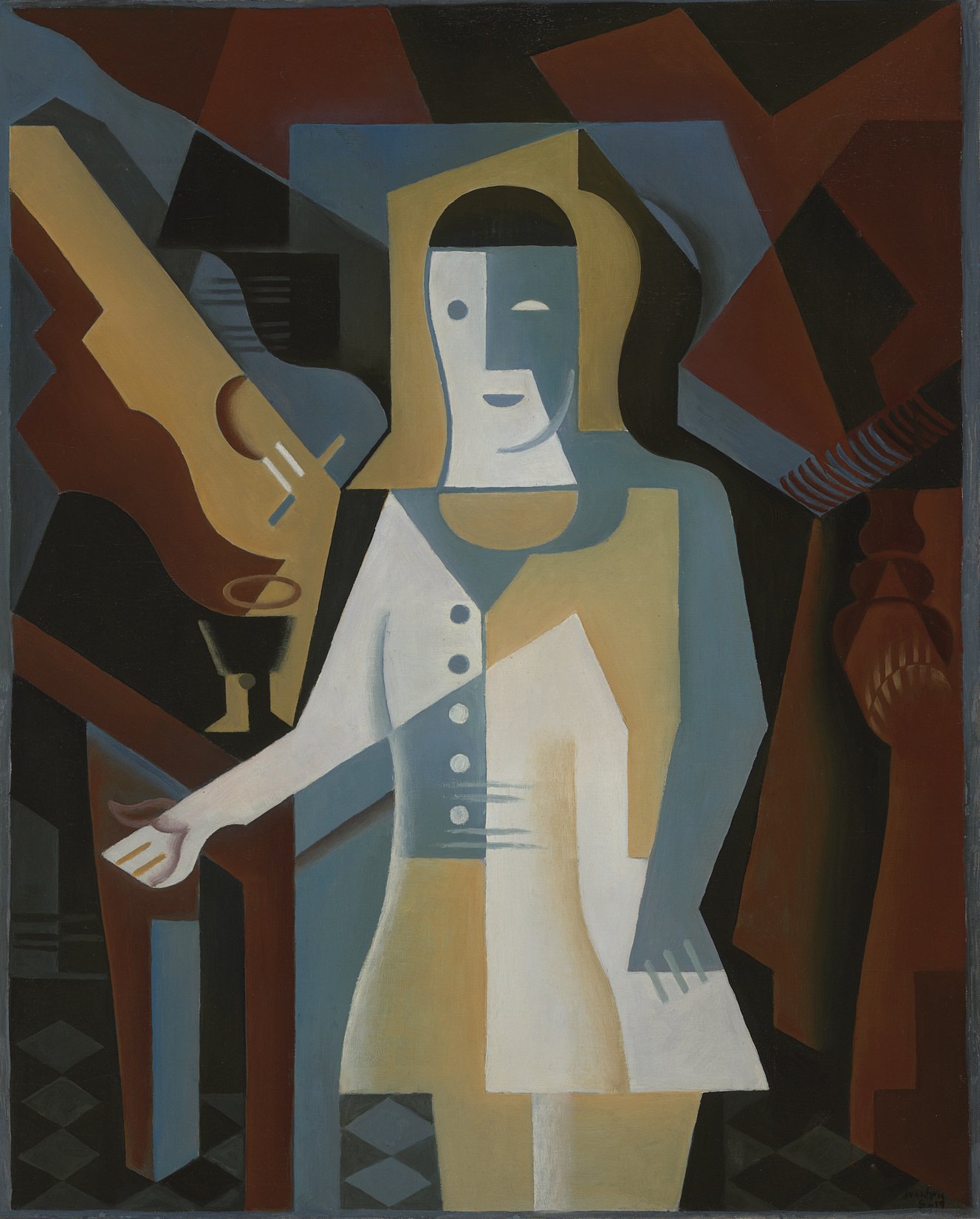Juan Gris
Pierrot, 1919

Juan Gris
Pierrot, 1919
Kunst Museum Winterthur, Legat Dr. Emil und Clara Friedrich-Jezler, 1973
Foto: SIK-ISEA, Zürich (Martin Stollenwerk)
The presence of Cubist paintings by Picasso and Braque was exceptionally strong even before the First World War. The Spaniard Juan Gris discovered the foundations of his work within them, but nevertheless developed his own, quite individual style, which led him to a strictly classical pictorial design.
In around 1920 there were numerous images of Harlequin and Pierrot present in art. Again it was Picasso, who was first to incorporate theatrical figures in his pictures. Pierrot is the clown in the Italian Commedia dell’arte, who wears a white costume and carries a guitar. He is Harlequin’s rival. He became popular on the stages at French fairs and it was here that he became the pure, innocent figure that appealed to the artists. Gris specifically selected the Pierrot motif in order to pay homage to French tradition.
But this Pierrot has nothing to do with the theatre. He is not playing, but is standing still in the centre of the picture. His head, torso, arms and legs are geometric forms, no different to the table, the guitar and the curtain with the large cord to the right. The row of buttons, the falls of the jacket, the chequered floor – Gris finds elements to serve his design everywhere. Prominent, are the lines going through the picture; the central axis goes through the face and the jacket, a diagonal leads along the edge of the table and the outstretched right arm, to the curtain fringes in the right hand edge of the picture.
The forms in the picture respond to one another: the bulbous guitar reiterates the shape of Pierrot’s head. Light and shaded areas are loosely distributed; they are independent of the source of light and create a balance between the forms in the picture. Thus, under Gris’ hand a dense texture is created.


